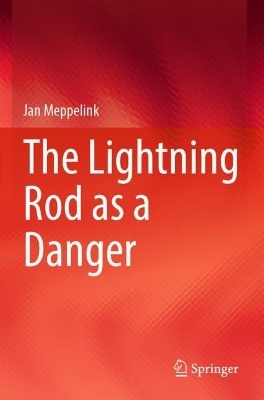
The Lightning Rod as a Danger
Springer International Publishing (Verlag)
978-3-031-30436-1 (ISBN)
This book investigates the physical effects of a lightning flash on a person near the down conductor of a lightning protection system. These effects are the touch voltage, the step voltage and the side flash. For this purpose, a full-scale simulation model of the human body with a resistance of 1000 ohms was first created. In the simulation model, the body can touch the down conductor or be placed close to it. Furthermore, the specific resistance of the earth is varied. Likewise, insulating layers such as asphalt can be incorporated into the simulation model. Also, special cases like water permeable layers or water layers on an asphalt layer can be calculated. In post-processing, all relevant values can be determined, such as the energy converted in the body, the charge, the current and the voltage applied to the body. A comparison with the permissible limit values then shows for the lightning protection classes whether there is danger or not and provides information on necessary measures. There is a risk for death and injury if the down conductor is touched. However, there is also a risk of a side flash if a person is standing next to a discharge. Site isolation with dry asphalt is effective, but there is a residual risk of surface discharges. In real situations with wet asphalt, water-permeable layers or asphalt with a water layer, however, there is a great risk of death or injury. Equipotential bonding with an earthing grid is a necessary but not sufficient solution with regard to the induced voltage at negative subsequent stroke. Therefore, the situation must always be examined on a case-by-case basis with regard to the safety requirements. The only effective measure to prevent injury and death due to touch voltage is an insulating down conductor in conjunction with equipotential bonding. The measures for reducing the touch voltage, such as site insulation and equipotential bonding, basically also apply to limiting the step voltage. A risk calculation according to IEC 62305-2 gives the mean time between two events of injury and death MG = 1/RA. The tolerable risk is: RA = 0,0001 or MT = 10.000 years, equivalent to one death in 10.000 years.
Jan Meppelink received his Dipl.-Ing. Degree and Dr.-Ing. in electrical engineering from the Technical University of Berlin. From 1984 to 1988, he was Leader of Basic Development High Voltage Engineering, ABB High Voltage Technologies, Zürich, Switzerland. He was Leader of the study group "Principle Development" in High Voltage Engineering and Gas-Insulated Switchgear (GIS), especially for the performance verification testing of 800 kV Gas-Insulated Switchgear and commissioning of the 550 kV GIS Itaipu/Brazil, the development of the EMI proof design of secondary equipment for high voltage substations, research on propagation and measurement of very fast transients in GIS and development of ultra-fast voltage dividers for very fast transient measurements. From 1988 to 1992, he was Manager Projects International Gas-Insulated Switchgear, ABB High Voltage Technologies, Zürich, Switzerland. He was Leader of the Department for order handling and project management and also Leader of theEngineering Department. Since 1992, he is Professor for High Voltage Engineering at the University of applied Sciences, Soest, Germany. Since 2008, he is Course Director of the Study Course "Engineering and Project Management". His field of research includes high voltage engineering, lightning and over voltage protection and along with the study course engineering and project management, lean management, process management, project management and sales engineering. Since 2015, he is Professor Emeritus. He is Head of the German working group AK 251-04 dealing with standardisation of lightning protection system components and Member of IEC TC81, MT8, MT14, MT21 and Cenelec TC81X WG2.
In 2021, he received the Benjamin Franklin medal from the German VDE/ABB. In 2022, he received the IEC 1906 award from IEC.
Introduction.- Model for calculating the hazard.- Exemplary buildings with earthing system type A and type B.- Permissible limits for the cause of death due to ventricular fibrillation.- Materials.- Danger from lightning currents 10/350, 1/200; 0.25/100 according to type of coupling.- Effect of site insulation with asphalt according to IEC 62305-3.- Effect of site insulation with gravel according to IEC 62305-3.- Water-permeable site insulation.- Danger due to step voltage.- Summary of the hazard posed by a lightning rod.- Measures to reduce step and touch voltage as per IEC 62305-3.- Insulating down conductor.- National and international statistics of deaths and injuries.- Statistics of relevant parameters of lightning.- Calculation of risk RA for death and injury of living beings due to electric shock as a result of touch- and step voltages according to IEC 62305-2.- Strength of air gaps at inductivelycoupled surge voltages.- Numeric calculation.- Applied pulse shapes 0.25/100 according to IEC 62305-1.- Propagation and velocity of surface discharges.- Annex A: A contribution to the limitation of step voltages.- Bibliography.
| Erscheinungsdatum | 17.06.2024 |
|---|---|
| Zusatzinfo | XXIX, 211 p. 195 illus., 157 illus. in color. |
| Verlagsort | Cham |
| Sprache | englisch |
| Maße | 155 x 235 mm |
| Themenwelt | Naturwissenschaften ► Biologie ► Ökologie / Naturschutz |
| Technik ► Elektrotechnik / Energietechnik | |
| Schlagworte | Insulating down conductor • Lightning flash • Protection measures to protect people • Risk of injury and death • Side flash • Step Voltage • Touch Voltage |
| ISBN-10 | 3-031-30436-5 / 3031304365 |
| ISBN-13 | 978-3-031-30436-1 / 9783031304361 |
| Zustand | Neuware |
| Haben Sie eine Frage zum Produkt? |
aus dem Bereich


